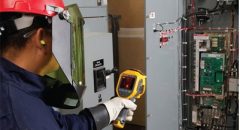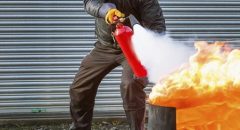Hazard Identification & Risk Assessment
A practical guide to identifying hazards and assessing risks to keep your workplace safe and compliant.
Introduction to Hazard Identification & Risk Assessment
What is hazard identification?
Hazard identification is the process of spotting anything that could cause harm at work. This can include unsafe machines, chemicals, poor ergonomics, or stressful work environments.
What is risk assessment?
Risk assessment is about evaluating the chances that a hazard could cause harm and how serious the harm could be. It helps decide which risks need immediate attention.
Why this process matters in health & safety management
Knowing hazards and risks helps prevent accidents and injuries. It also ensures compliance with health and safety laws, boosts employee confidence, and reduces workplace disruptions.
Key Concepts and Definitions
Definition of hazard, risk, severity, and likelihood
- Hazard: Anything that could cause harm.
- Risk: The chance of harm happening from a hazard.
- Severity: How serious the harm could be.
- Likelihood: How probable it is that harm will occur.
Relationship between hazard identification and risk assessment
You first identify hazards, then assess the risks they pose. Without identifying hazards, you cannot properly assess risks. This ensures that safety actions target the most critical threats.
Regulatory and standard frameworks
Standards like ISO 45001 and local health and safety regulations require organizations to identify hazards and assess risks as part of their safety management systems.
Hazard Identification Process
Planning and preparation for hazard identification
Start by gathering workplace information, such as past incidents, safety manuals, and material safety data sheets. Form a team and set a schedule for inspections.
Methods of identifying hazards
- Inspections: Walk through the workplace to spot potential hazards.
- Incident data: Review past accidents or near misses to learn from them.
- Job analysis: Break down tasks to see where risks may arise.
Categorising hazards
Hazards can be grouped into:
- Physical: Machinery, slips, falls.
- Chemical: Toxins, flammable materials.
- Ergonomic: Poor posture, repetitive movements.
- Psychosocial: Stress, workplace violence, or harassment.
Documenting and communicating identified hazards
Maintain a hazard register and share it with staff. Clear documentation ensures everyone knows about potential dangers and the measures in place to manage them.
Risk Assessment Techniques
Assessing severity and likelihood of risks
Assign ratings to risks based on how serious an incident could be and how likely it is to happen. This helps prioritize safety efforts.
Qualitative vs quantitative methods
- Qualitative: Simple categories like high, medium, or low risk.
- Quantitative: Use numbers and calculations to measure risk more precisely.
Use of risk matrices and ranking tools
A risk matrix combines severity and likelihood to give a clear picture of which hazards need urgent attention.
Prioritising risks for action
Focus first on hazards that could cause severe harm and are likely to happen. Lower-risk issues can be addressed later.
Risk Control & Mitigation Measures
Hierarchy of hazard controls
- Elimination: Remove the hazard entirely.
- Substitution: Replace it with something less dangerous.
- Engineering controls: Isolate people from the hazard.
- Administrative controls: Change work procedures or provide training.
- Personal Protective Equipment (PPE): Use protective gear as a last line of defense.
Implementation of control measures
Assign responsibilities, provide resources, and put controls into action with clear timelines.
Monitoring effectiveness of controls
Regularly check whether controls are working through inspections, audits, and employee feedback. Make improvements as needed.
Integration into Safety Management Systems
Embedding hazard identification & risk assessment in organisational systems
Make hazard identification and risk assessment a routine part of your management system. Align it with ISO 45001 or similar standards to ensure consistency.
Roles and responsibilities of stakeholders
Everyone has a role—from management to workers. Management provides resources and commitment, supervisors monitor tasks, and employees report hazards and follow safety procedures.
Documentation, review, and continual improvement
Keep records of hazards, risks, and control measures. Review them regularly and update the system to continuously improve safety.
Challenges, Best Practices & Common Pitfalls
Common barriers to effective hazard identification & risk assessment
- Incomplete or outdated data
- Lack of employee involvement
- Ignoring minor hazards
- Overlooking the implementation of controls
Best practices
- Involve multidisciplinary teams
- Use up-to-date data and records
- Make the process routine, not a one-off
- Communicate results and follow up on actions
Common pitfalls
- Treating the process as optional
- Poor documentation
- Ignoring monitoring and feedback
- Underestimating certain risks
Conclusion & Next Steps
Summary of key takeaways
Hazard identification and risk assessment are essential to prevent accidents and protect employees. By identifying hazards, assessing risks, implementing controls, and monitoring results, organizations can create a safer work environment.
How organisations move forward
Adopt a proactive safety culture by embedding these processes into your daily operations, prioritising high-risk issues, and continuously reviewing your safety measures.
Resources and further reading
Explore local safety guidelines, ISO 45001 standards, and HSE manuals to deepen your understanding.
Call to Action
At Aura Safety Risk Consultant, we provide expert HSE management and engineering consultancy to ensure safety, compliance, and sustainable industrial growth.
Contact us at +91 99994 02106
What we offer
Our Services
Identify, evaluate, and control process hazards with expert risk assessments, ensuring safe, reliable, and compliant industrial operations.

Identify, evaluate, and control process hazards with expert risk assessments, ensuring safe, reliable, and compliant industrial operations.

Implement site safety plans, audits, and training to prevent accidents, ensuring safer construction environments and regulatory compliance.

Design, engineer, and audit fire protection systems ensuring reliable performance, asset safety, and adherence to national safety standards.

Empowering workforce with certified HSE, fire, and industrial safety training programs for skill development and regulatory competence.

Create immersive, interactive VR safety training modules for realistic learning experiences in hazard recognition and emergency preparedness.
How it works
Industry Consultation
Project Scoping & Industry Brief
Service Selection
Site Visit & Inspection
Audit & Analysis
Report Submission & Discussion
Frequently Ask Question
A hazard is something that can cause harm, while a risk is the chance that the hazard will actually cause harm.
Risk assessments should be reviewed regularly, especially after incidents, changes in operations, or the introduction of new equipment.
Both approaches are valid. Qualitative assessments are simpler, while quantitative methods provide more precise measurements of risk.
It ensures consistency, legal compliance, proactive risk management, and a safer workplace culture.
It’s a system to control hazards in order of effectiveness: eliminate, substitute, engineer, administrate, and use PPE last. It helps reduce harm most efficiently.
They prioritize based on severity and likelihood: the most dangerous and probable risks are dealt with first.
Ignoring minor hazards, poor documentation, lack of monitoring, and treating risk assessment as a one-time task.
